
The Geheime Staatspolizei, abbreviated Gestapo, was the official secret police of Nazi Germany and in German-occupied Europe.

Organized crime is a category of transnational, national, or local group of centralized enterprises run to engage in illegal activity, most commonly for profit. While organized crime is generally thought of as a form of illegal business, some criminal organizations, such as terrorist groups, rebel forces, and separatists, are politically motivated. Many criminal organizations rely on fear or terror to achieve their goals or aims as well as to maintain control within the organization and may adopt tactics commonly used by authoritarian regimes to maintain power. Some forms of organized crime simply exist to cater towards demand of illegal goods in a state or to facilitate trade of goods and services that may have been banned by a state. Sometimes, criminal organizations force people to do business with them, such as when a gang extorts protection money from shopkeepers. Street gangs may often be deemed organized crime groups or, under stricter definitions of organized crime, may become disciplined enough to be considered organized. A criminal organization can also be referred to as an outfit, a gang, crime family, mafia, mob, (crime) ring, or syndicate; the network, subculture, and community of criminals involved in organized crime may be referred to as the underworld or gangland. Sociologists sometimes specifically distinguish a "mafia" as a type of organized crime group that specializes in the supply of extra-legal protection and quasi-law enforcement. Academic studies of the original "Mafia", the Italian Mafia, as well as its American counterpart, generated an economic study of organized crime groups and exerted great influence on studies of the Russian mafia, the Chinese triads, the Hong Kong triads, and the Japanese yakuza.
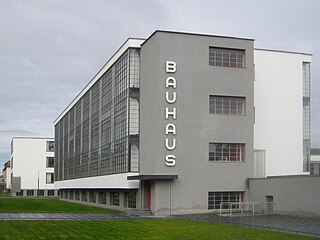
Weimar culture was the emergence of the arts and sciences that happened in Germany during the Weimar Republic, the latter during that part of the interwar period between Germany's defeat in World War I in 1918 and Hitler's rise to power in 1933. 1920s Berlin was at the hectic center of the Weimar culture. Although not part of the Weimar Republic, some authors also include the German-speaking Austria, and particularly Vienna, as part of Weimar culture.
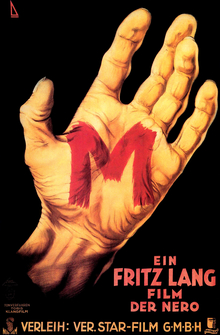
M is a 1931 German mystery thriller film directed by Fritz Lang and starring Peter Lorre in his third screen role as Hans Beckert, a serial killer who targets children. Both Lang's first sound film and an early example of a procedural drama, M centers on the manhunt for Beckert conducted by both the police and organized crime.

A gang is a group or society of associates, friends, or members of a family with a defined leadership and internal organization that identifies with or claims control over territory in a community and engages, either individually or collectively, in illegal, and possibly violent, behavior, with such behavior often constituting a form of organized crime.
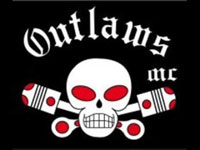
The Outlaws Motorcycle Club, incorporated as the American Outlaws Association or its acronym, A.O.A., is an international outlaw motorcycle club. Founded in McCook, Illinois in 1935, the Outlaws MC is the oldest outlaw biker club in the world. With 441 chapters located in 43 countries, and a membership of over 3,000, the club is also the third-largest in the world, behind the Hells Angels and the Bandidos. Outlaws members typically ride Harley-Davidson motorcycles.

Paragraph 175 was a provision of the German Criminal Code from 15 May 1871 to 10 March 1994. It made sexual relations between males a crime, and in early revisions the provision also criminalized bestiality as well as forms of prostitution and underage sexual abuse. Overall, around 140,000 men were convicted under the law. The law had always been controversial and inspired the first homosexual movement, which called for its repeal.
Criminal tattoos are classified in different ways. The meaning and histories of criminal tattoos vary from country to country, and they are commonly assumed to be associated with gang membership. They could also be a record of the wearer's personal history—such as their skills, specialties, accomplishments, incarceration, world view and/or means of personal expression. Tattoos have been empirically associated with deviance, personality disorders, and criminality. There is no direct correlation between tattoos and criminals, but we can observe the developed history of tattoos and their meanings in countries such as Australia, France, Italy, Japan, Russia, and the United States.

Kriminalpolizei is the standard term for the criminal investigation agency within the police forces of Germany, Austria, and the German-speaking cantons of Switzerland. In Nazi Germany, the Kripo was the criminal police department for the entire Reich. Today, in the Federal Republic of Germany, the state police (Landespolizei) perform the majority of investigations. Its Criminal Investigation Department is known as the Kriminalpolizei or more colloquially, the Kripo.
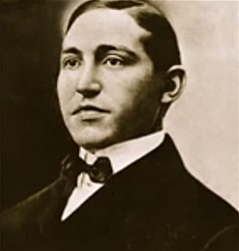
Paul Kelly was an Italian-born American mobster, who founded the Five Points Gang in New York City. He had started some brothels with prize money earned in boxing. Five Points Gang was one of the last dominant street gangs in New York history. Kelly recruited young, poor men from the ethnically diverse immigrant neighborhoods of Lower Manhattan. The Five Points Gang included some who later became prominent criminals in their own right, including Johnny Torrio, Al Capone, Lucky Luciano, Meyer Lansky and Frankie Yale.

An outlaw motorcycle club, known colloquially as a biker club or bikie club, is a motorcycle subculture generally centered on the use of cruiser motorcycles, particularly Harley-Davidsons and choppers, and a set of ideals that purport to celebrate freedom, nonconformity to mainstream culture, and loyalty to the biker group.
Rotwelsch or Gaunersprache also Khokhmer Loshn is a secret language, a cant or thieves' argot, spoken by groups in Germany, Switzerland, Austria, and Bohemia. The language is based on a mix of Low German, Yiddish, Hebrew, Romani, Latin, and Czech with a High German substrate.
A "thief in law" in the Soviet Union, the post-Soviet states, and their respective diasporas is a formal and special status of "criminal authority", a professional criminal who follows certain criminal traditions and enjoys an elite position among other members within organized crime and correctional facility environments and who has informal authority over lower-status members.
The Golden Twenties was a particular vibrant period in the history of Berlin. After the Greater Berlin Act, the city became the third largest municipality in the world and experienced its heyday as a major world city. It was known for its leadership roles in science, the humanities, art, music, film, architecture, higher education, government, diplomacy and industries.
The Irish Mob is a usually crime family–based ethnic collective of organized crime syndicates composed of primarily ethnic Irish members which operate primarily in Ireland, the United States, the United Kingdom, Canada and Australia, and have been in existence since the early 19th century. Originating in Irish-American street gangs – famously first depicted in Herbert Asbury's 1927 book, The Gangs of New York – the Irish Mob has appeared in most major U.S. and Canadian cities, especially in the Northeast and the urban industrial Midwest, including Boston, New York City, Philadelphia, Pittsburgh, Baltimore, Cleveland, and Chicago.

Jewish-American organized crime initially emerged within the American Jewish community during the late 19th and early 20th centuries. In media and popular culture, it has variously been referred to as the Jewish Mob, the Jewish Mafia, the Kosher Mob, the Kosher Mafia, the Yiddish Connection, and Kosher Nostra or Undzer Shtik. The last two of these terms are direct references to the Italian Cosa Nostra; the former is a play on the word for kosher, referring to Jewish dietary laws, while the latter is a calque of the Italian phrase 'cosa nostra' into Yiddish, which was at the time the predominant language of the Jewish diaspora in the United States.

The Detroit Partnership is an Italian-American Mafia crime family based in Detroit, Michigan. The family mainly operates in Detroit and the Greater Detroit area, as well as in other locations including Windsor, Ontario; Toledo, Ohio; and Las Vegas.

Crime in Germany is handled by the German police forces and other agencies.
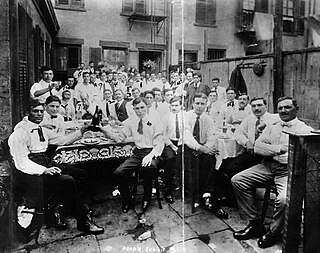
The Brooklyn Camorra or New York Camorra was a loose grouping of early-20th-century organized crime gangs that formed among Italian immigrants originating in Naples and the surrounding Campania region living in Greater New York, particularly in Brooklyn. In the early 20th century, the criminal underworld of New York City consisted largely of Italian Harlem-based Sicilians and groups of Neapolitans from Brooklyn, sometimes referred to as the Brooklyn Camorra, as Neapolitan organized crime is referred to as the Camorra.

The Satans Slaves Motorcycle Club (SSMC) is an international outlaw motorcycle club founded in Shipley, England in 1966. The Satans Slaves MC is one of the largest outlaw biker clubs in the United Kingdom and has 29 chapters in England, Scotland and Germany.














